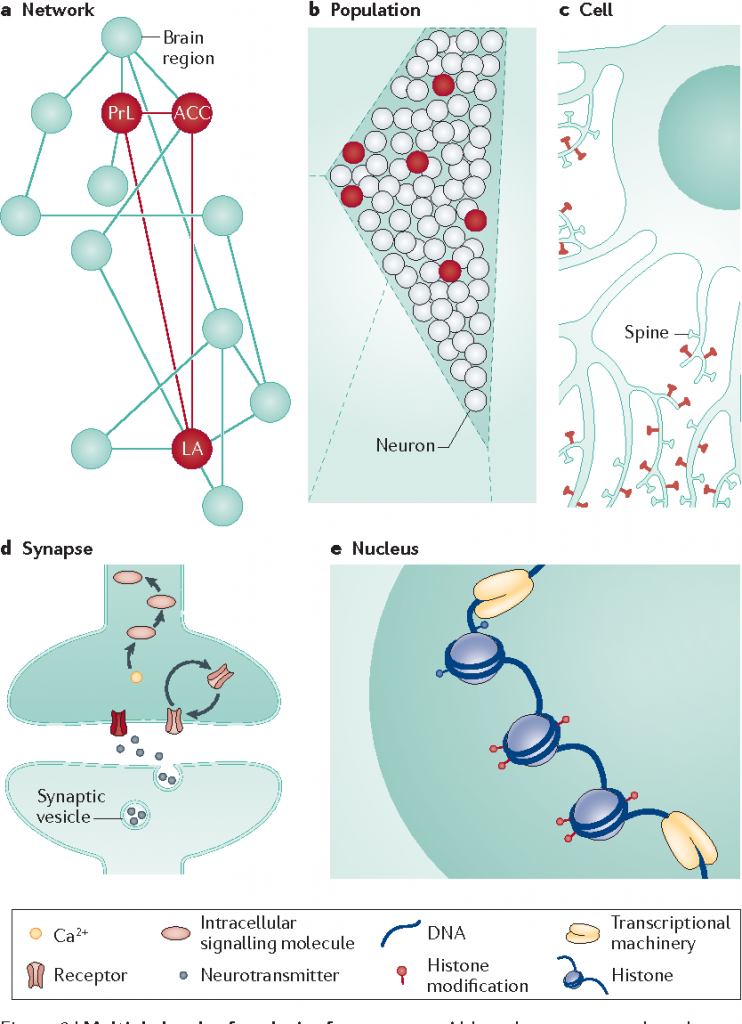Friday, 28 February 2020
The multiple levels of organization of living things: more central than ever to cognitive science

This week I want to talk about a concept that is fundamental to an understanding not only of the human brain but also of the entire human adventure in general: the various levels of organization of living systems. This concept is central to the most influential current studies in theoretical biology, if one is to judge from the article “Answering Schrödinger’s question: A free-energy formulation”, by Maxwell Ramstead of McGill University’s Department of Psychiatry and his colleagues Paul Badcock and Karl Friston, published in March 2018 in the journal Physics of Life Reviews. While I will not delve here into the details of the free-energy principle that is central to all these studies, I will describe this article as the first attempt to explain the dynamics of cognitive systems at every scale on which they occur. In other words, these three authors attempt to consider every behaviour of living beings as the product of “nested systems of systems”.
In December 2019, the same three authors pursued this line of inquiry in another article in the same journal: “The hierarchically mechanistic mind: A free-energy formulation of the human psyche”. The term “hierarchically” here refers directly to the multi-level organization of the brain and of the entire machinery of life. I don’t have the time or the space here to present this model to you in detail, but it is truly fascinating. It depicts the brain as a complex adaptive system that is constantly trying to minimize “free energy” (which can be roughly equated with the entropy or disorganization of the system). The human organism constantly strives to maintain conditions that ensure its own viability, by cycling between acting upon the world and perceiving it. To do so, it uses all of the organism’s underlying neurocognitive mechanisms, which are organized into levels that are nested into one another. The following excerpt from the December 2019 article provides a concise summary of the authors’ model (albeit a summary that may be somewhat daunting to the layperson):
More precisely, this hypothesis defines the human brain as: an embodied, complex adaptive control system that actively minimises the variational free-energy (and, implicitly, the entropy) of (far from equilibrium) phenotypic states via self-fulfilling action-perception cycles, which are mediated by recursive interactions between hierarchically organised (functionally differentiated and differentially integrated) neurocognitive processes. These ‘mechanics’ instantiate adaptive priors, which have emerged from selection and self-organisation co-acting upon human phenotypes across different timescales.
Note how the last sentence draws attention to the fact that these various levels of organization are also deployed across various time scales, as I have discussed in an earlier post in this blog. Note also that the interaction between self-organization and general processes of selection (of which Darwin’s natural selection is only one particular case) comes from evolutionary systems theory, another important field of study within theoretical biology.
In closing, I’d like to provide a very down-to-earth example to which the levels of organization apply: the trace of a memory. Where are the traces of memories located in our brains? That’s a very good question, and it can be answered correctly only with reference to the many levels of organization in the brain, because as seen in the above image (from the article “Finding the engram” , by Sheena Josselyn et al., published in Nature Reviews Neuroscience in August 2015), what are known as memory engrams can be analyzed at many different levels.
At the molecular level, in the histones (a type of protein) associated with the DNA in the nuclei of neurons (or in the DNA itself ), modifications can be found that represent epigenetic alterations — traces of interactions with the environment that modify the expression of certain genes.
At the next level up, in the synapses (the connections between neurons), the opening of certain receptors, or the number of them, can be modified by the fluctuations in neural activity at these locations over time.
At the following level—the entire neuron—thousands of dendritic spines become stronger or larger or are reabsorbed according to how often they are activated in the brain’s learning processes.
And at the next level, within populations of neurons, certain sets of neurons that have to work together frequently in the course of learning processes form selected neuronal assemblies.
Lastly, at the level of the brain as a whole, vast temporary networks of connections can form between brain structures (such as the hippocampus and the cortex) as part of the learning processes that let the brain respond effectively to changing situations.
As you can see, even to answer such a seemingly simple question as where the traces of memories are located in the brain, we must consider all of the levels of organization of this most complex object in the known universe, of which each of us has an example right between our ears. This consideration of all of the brain’s levels of organization is central to the models proposed by cognitive scientists today, just as it is central to the design of The Brain from Top to Bottom, inspired by Henri Laborit, who had intuited its importance!
From the Simple to the Complex, Memory and the Brain | Comments Closed








